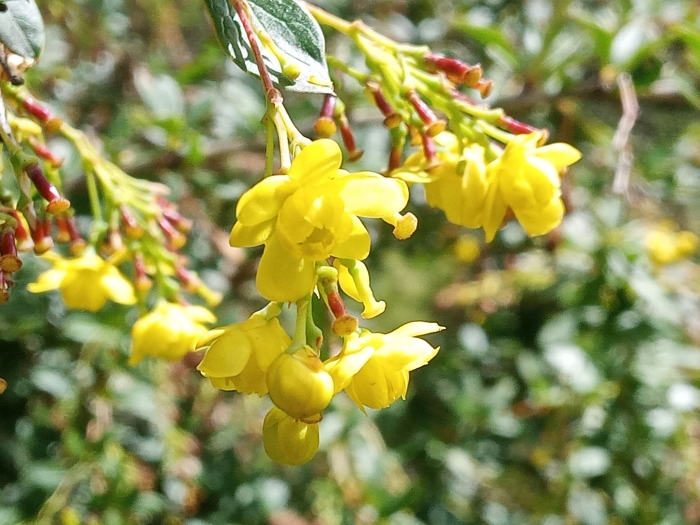Indian Barberry
(Berberis aristata)
Indian Barberry (Berberis aristata)
/
/

Dutta Roy Sagnik
CC BY 4.0
Image By:
Dutta Roy Sagnik
Recorded By:
Copyright:
CC BY 4.0
Copyright Notice:
Photo by: Dutta Roy Sagnik | License Type: CC BY 4.0 | License URL: http://creativecommons.org/licenses/by/4.0/ | Rights Holder: Dutta Roy Sagnik | Publisher: iNaturalist | Date Created: 2022-06-28T10:08:27-07:00 |


















Estimated Native Range
Summary
Berberis aristata, commonly known as Indian barberry or tree turmeric, is a deciduous spiny shrub native to the Himalayan region, including Nepal, India, and Bhutan. It typically grows to a height of 7 to 10 feet and features yellow-brown bark and bright red berries that are attractive to birds. The leaves are simple, elliptic, and have spiny margins, while the flowers are small, yellow, and appear in dense racemes in late spring to early summer. The fruit is an oblong red berry that ripens in the fall and is quite showy.
Indian barberry is valued for its medicinal properties, as it contains the compound berberine, which has been used in traditional medicine. The plant is also used as an ornamental shrub in gardens for its striking berries and yellow flowers. It prefers full sun to part shade and requires well-drained soil. While it is drought-tolerant once established, it benefits from occasional watering during prolonged dry periods. In cultivation, it can be used for hedges, border planting, or as a specimen plant. It is important to note that Berberis aristata can be potentially invasive outside its native range, so gardeners should check local regulations before planting.CC BY-SA 4.0
Indian barberry is valued for its medicinal properties, as it contains the compound berberine, which has been used in traditional medicine. The plant is also used as an ornamental shrub in gardens for its striking berries and yellow flowers. It prefers full sun to part shade and requires well-drained soil. While it is drought-tolerant once established, it benefits from occasional watering during prolonged dry periods. In cultivation, it can be used for hedges, border planting, or as a specimen plant. It is important to note that Berberis aristata can be potentially invasive outside its native range, so gardeners should check local regulations before planting.CC BY-SA 4.0
Plant Description
- Plant Type: Shrub
- Height: 6-10 feet
- Width: 4-8 feet
- Growth Rate: Slow
- Flower Color: Yellow
- Flowering Season: Spring
- Leaf Retention: Evergreen
Growth Requirements
- Sun: Full Sun
- Water: Medium
- Drainage: Medium
Common Uses
Deer Resistant, Drought Tolerant, Hedges, Low Maintenance
Natural Habitat
native to the Himalayan region, including Nepal, India, and Bhutan
Other Names
Common Names: Chutro, Nepal Barberry, Tree-Turmeric
Scientific Names: , Berberis aristata, Berberis aristata var. sinensis, Berberis bussmul, Berberis bussmul, Berberis caerulescens, Berberis ceratophylla, Berberis chitria, Berberis chitria var. sikkimensis, Berberis coccinea
GBIF Accepted Name: